A chain of salty lagoons, fringed with dense mangrove forests, stretches along the northern coastline of Mexico’s Yucatan Peninsula. The hot, humid wetlands are a major stronghold for the American flamingo.
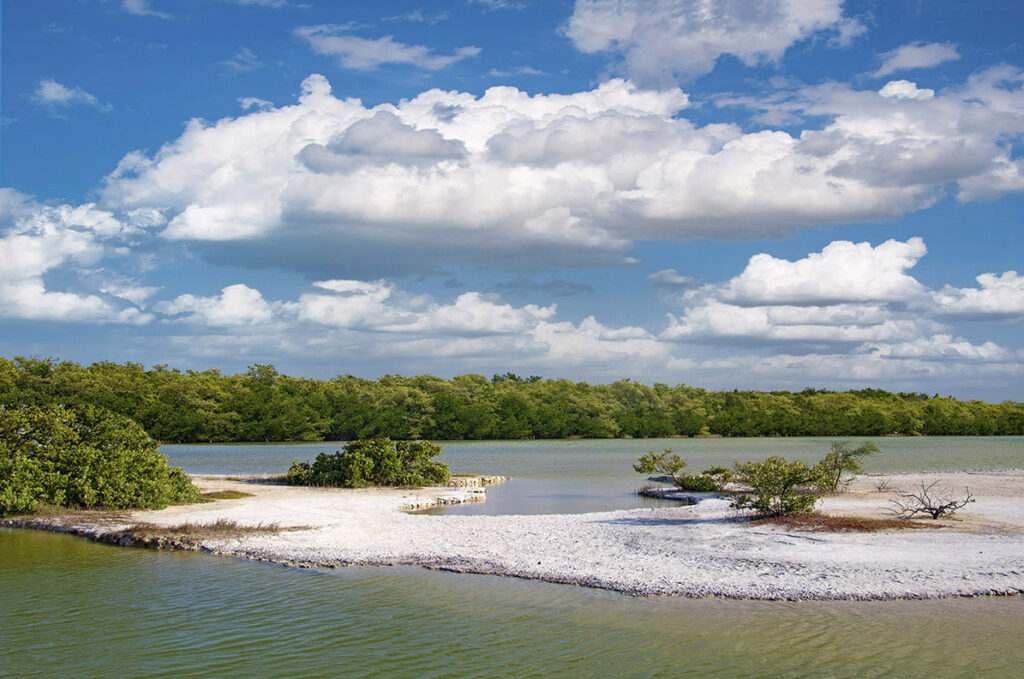
Thick forests of red mangroves grow along the edges of most of the brackish lagoons used by flamingos along the northern coast of Mexico’s Yucatan Peninsula.
I first visited the area roughly 20 years ago and always vowed to return to focus on these charismatic birds and their extravagant feather finery.
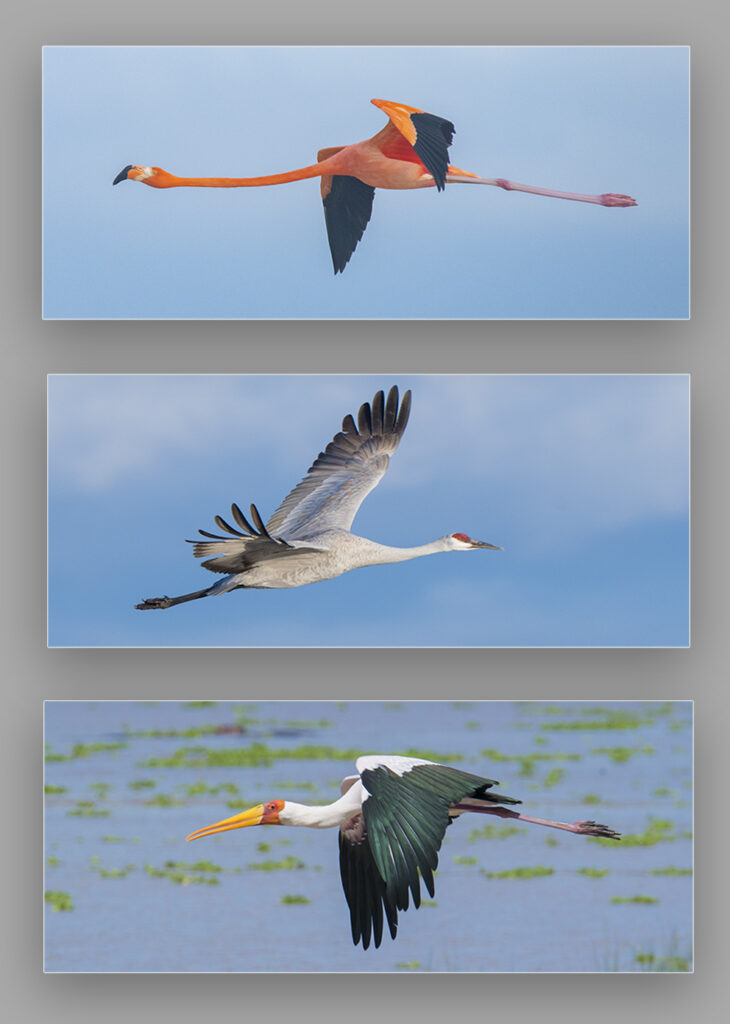
A flamingo’s long neck and legs prompted early scientists to claim that it must be closely related to similarly endowed birds such as the sandhill cranes of the Arctic and Africa’s yellow-billed storks.
For a long time, scientists thought the flamingo must be related to other long-legged wading birds such as cranes and storks. Those who disagreed argued that the flamingo was really just an atypical goose because of its voice and the behaviour of its chicks. It wasn’t until the early 2000s that the controversy was finally solved. It turns out that flamingos are most closely related to grebes, a small distinctive group of waterbirds. The unexpected relatedness is a testament to the shape-shifting power of evolution.
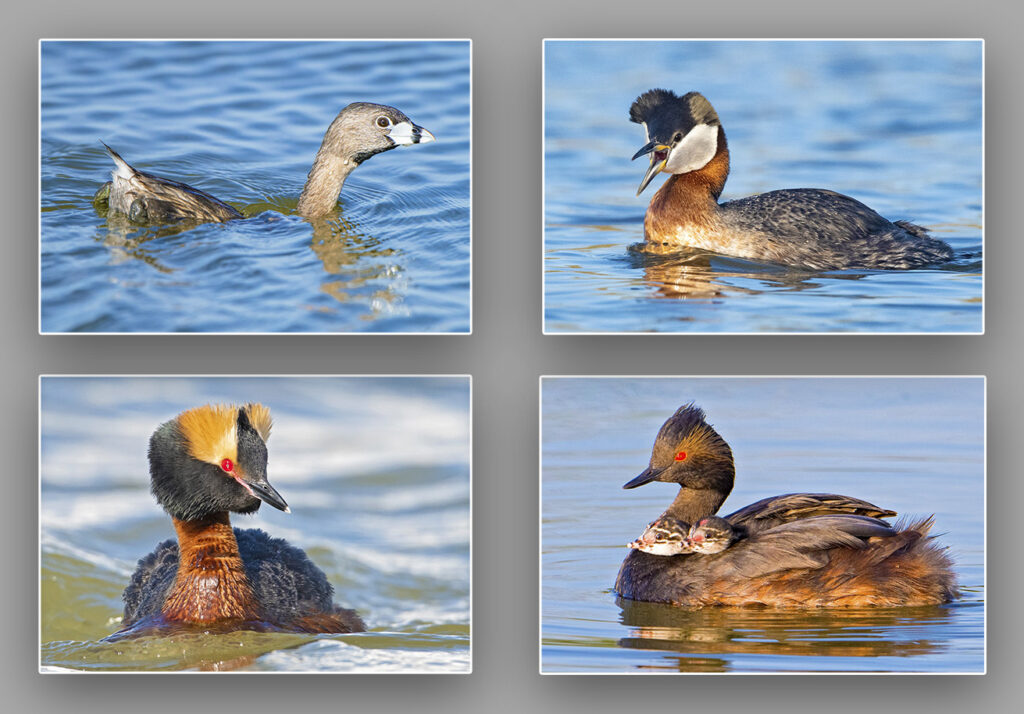
Surprisingly, grebes are the closest relative of flamingos, despite their marked differences in physical appearance. (Clockwise from upper left) pied-billed grebe, red-necked grebe, eared grebe and chicks, horned grebe.
Flamingos are filter-feeders, the avian equivalent of baleen whales. The birds sieve microscopic algae, seeds, and tiny invertebrates through a row of fringes along their upper and lower beaks. The gap between the two halves of the beak determines the size of food that can be taken in and the bend halfway along keeps the gap roughly the same along its entire length. If a flamingo’s bill was straight the gap would widen towards the tip and produce a much less efficient filtering mechanism. The forward and backward movement of the tongue, 4-5 times/second, pumps water in and out the sides of the beak.
Aside from their comically shaped beak the flamingo’s most alluring feature is its flamboyant pink plumage. The colour is produced by carotenoid pigments which occur naturally in a wide variety of animal and plant life and are responsible for the orange and red colouring in many birds, including flamingos. The birds cannot synthesize the pigments themselves and must obtain them from the algae and invertebrates they consume in their diet.
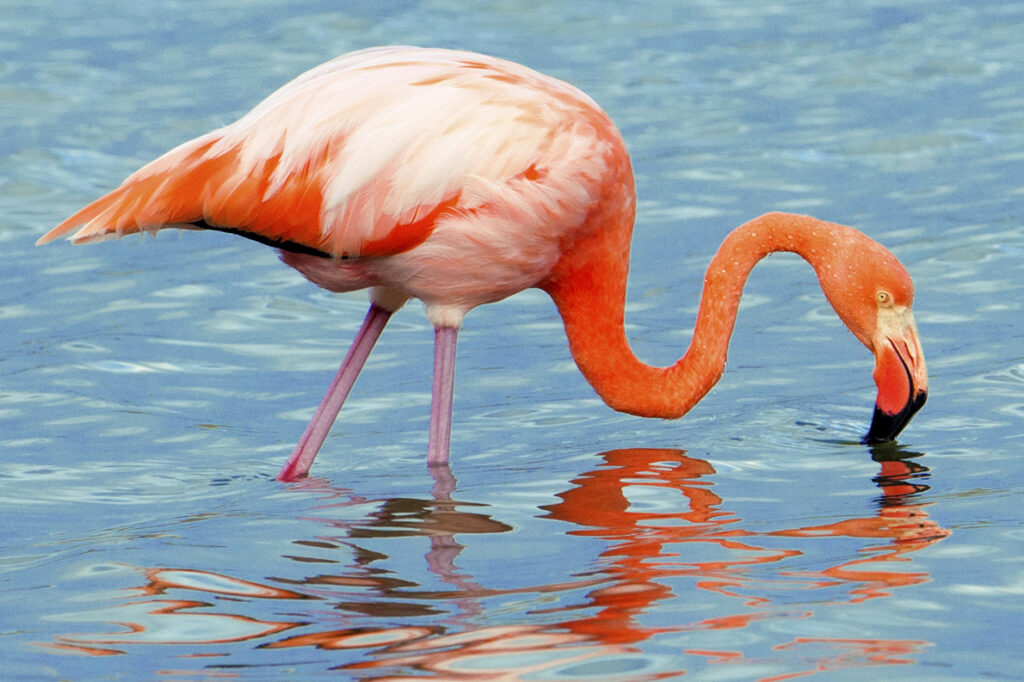
Despite having one of the longest necks in the bird world, the flamingo has roughly the same number of cervical vertebrae as a goose. In the photo you can see the kinks it its neck where one vertebrae transitions to the next.
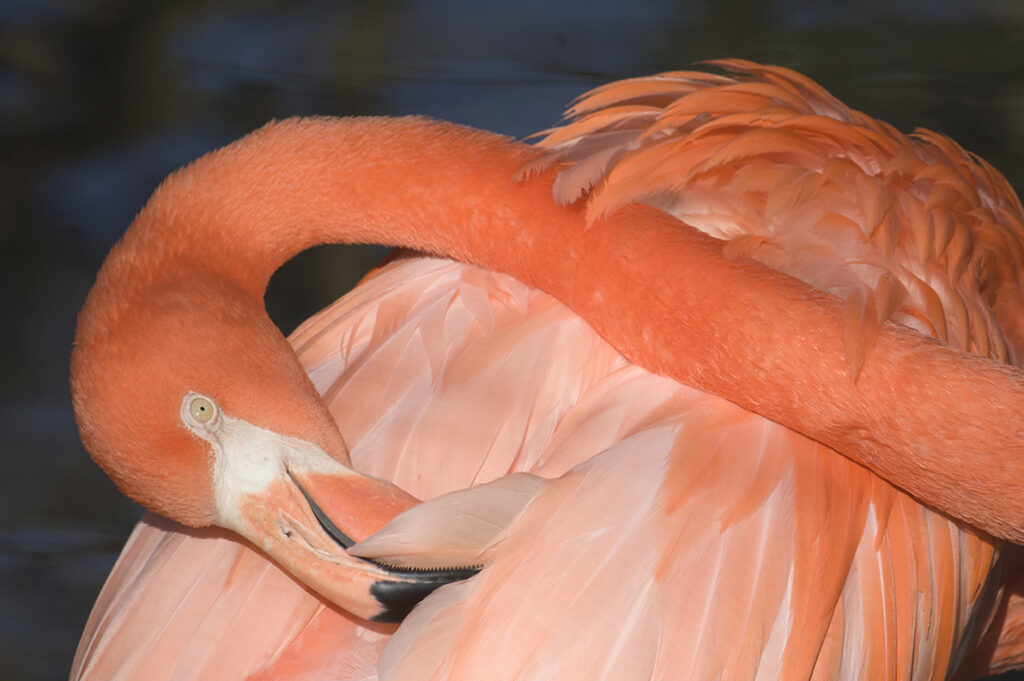
The American flamingo may spend up to 30% of its day preening – three times as much as a duck or goose.
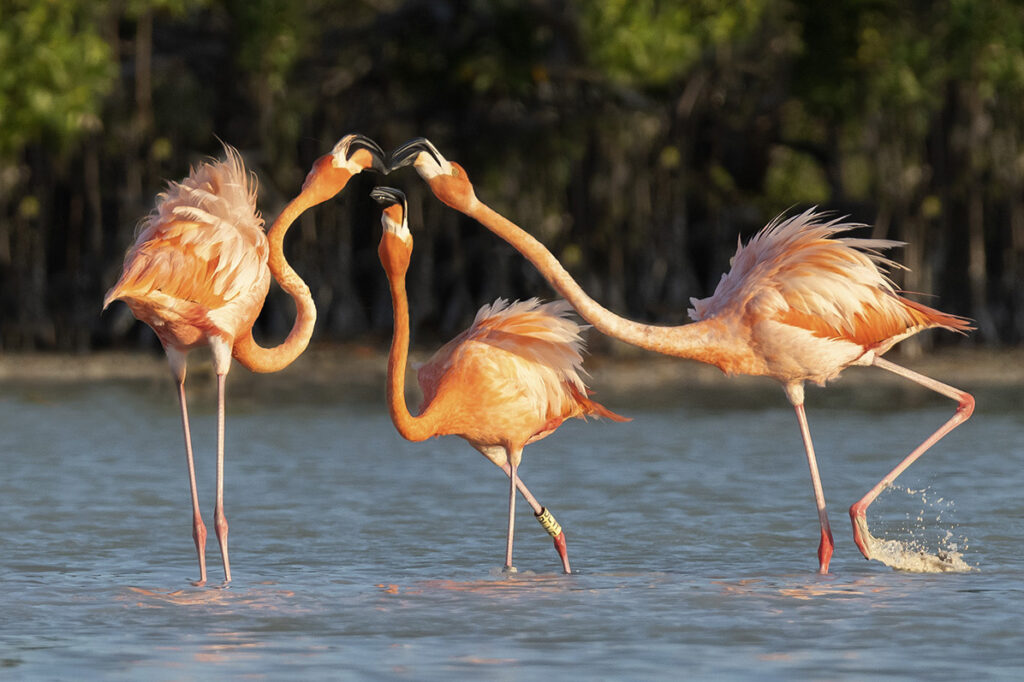
Most squabbles between flamingos are settled without the need for physical fighting.
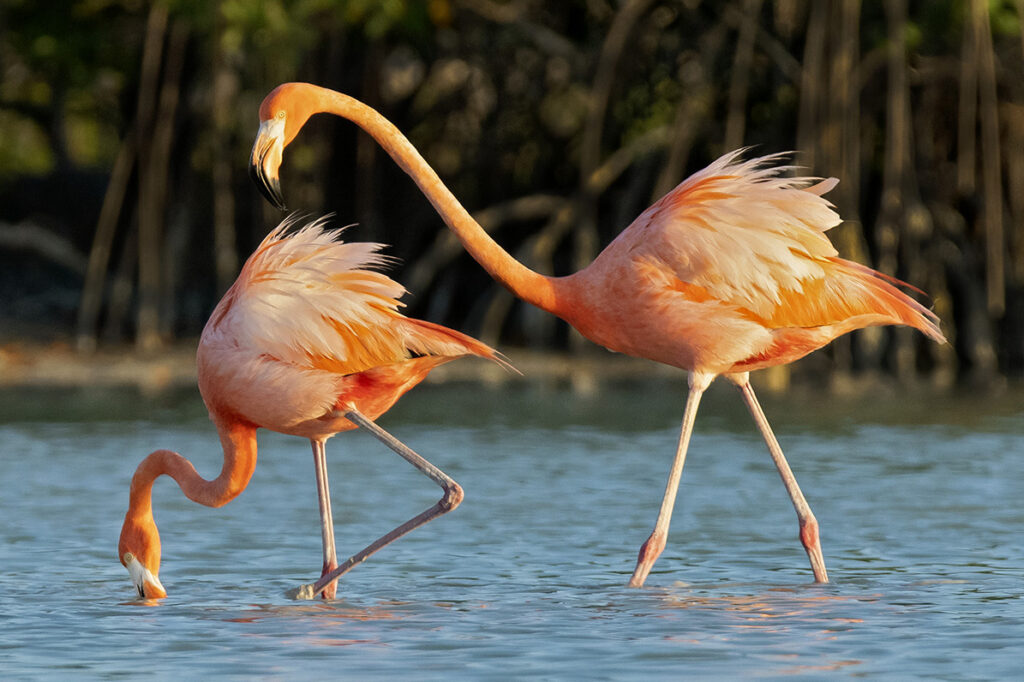
This courtship display is called hooking. Most American flamingos court, and eventually mate, with a different partner every nesting season.
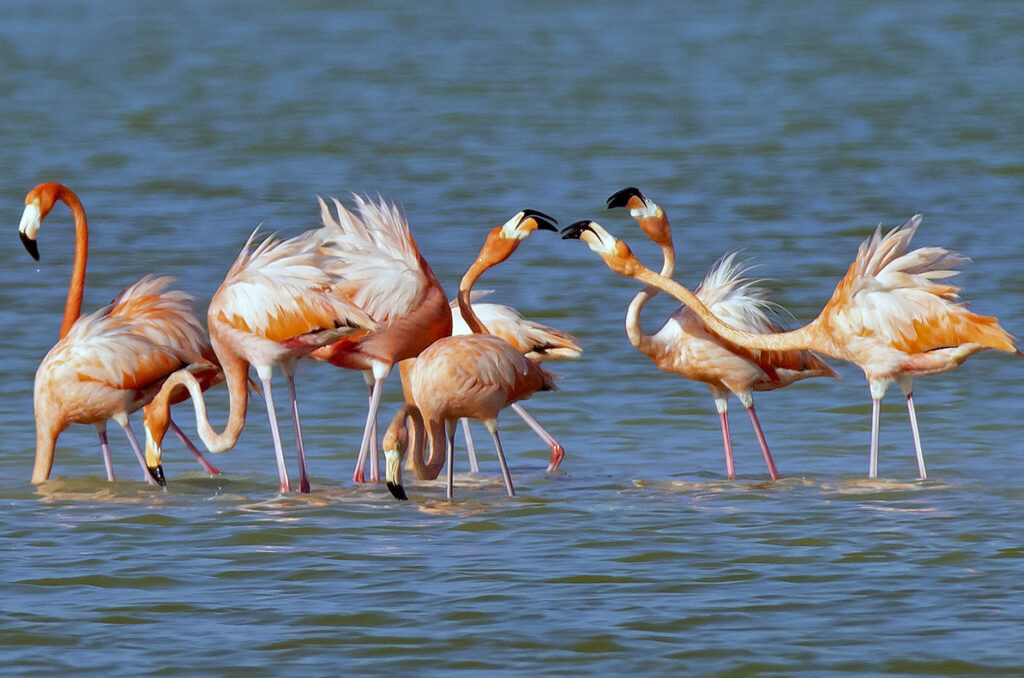
Typically, flamingos do not squabble when they are foraging yet individuals in this group did so repeatedly although I can’t explain why.
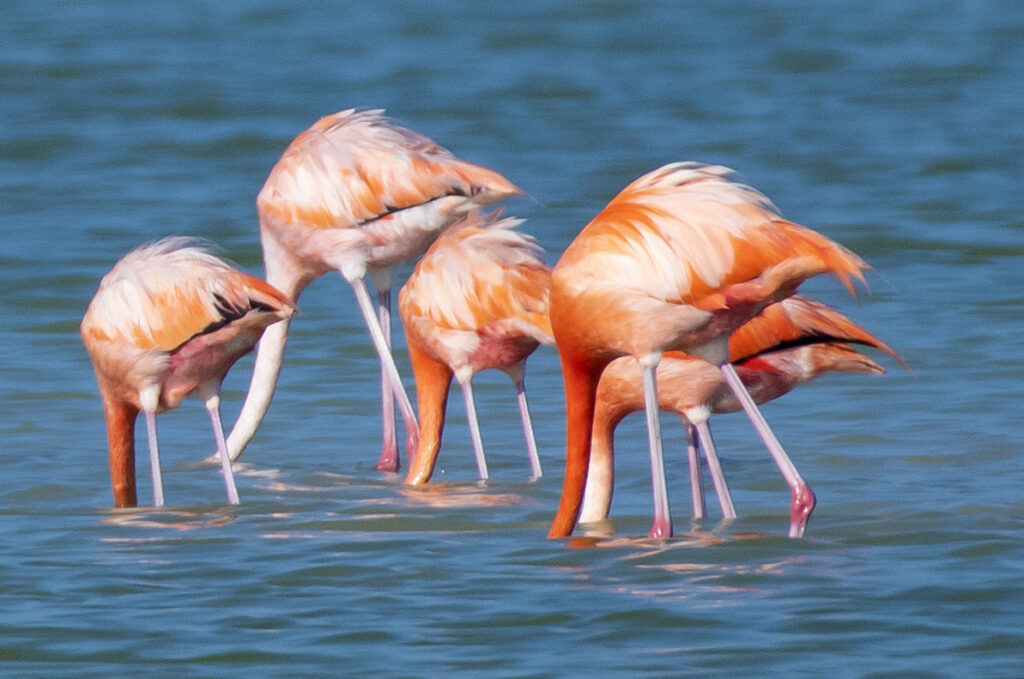
American flamingos typically forage with their head submerged, facing backward, and upside down, with the uppermost part of the beak resting on the lagoon bottom. In this position they filter the muddy surface for organic matter as well as snails, midges, and brine fly larvae.
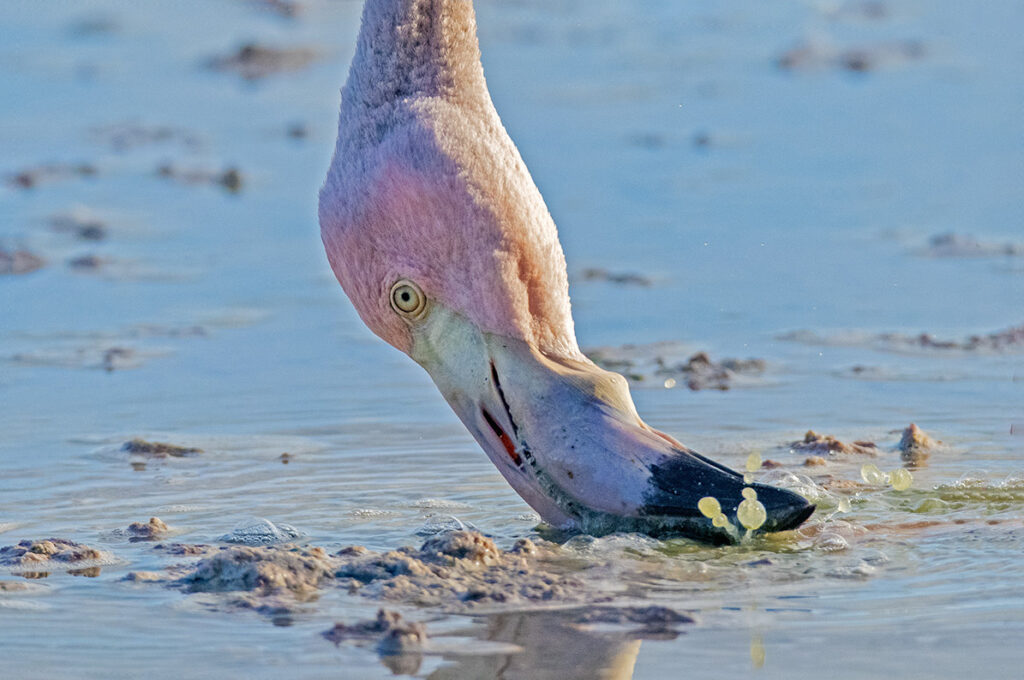
The American flamingo’s piston-like tongue moves back and forth 4-5 times/second, sucking in food-filled water and mud that is filtered by the fringes on the edges of the bird’s beak.
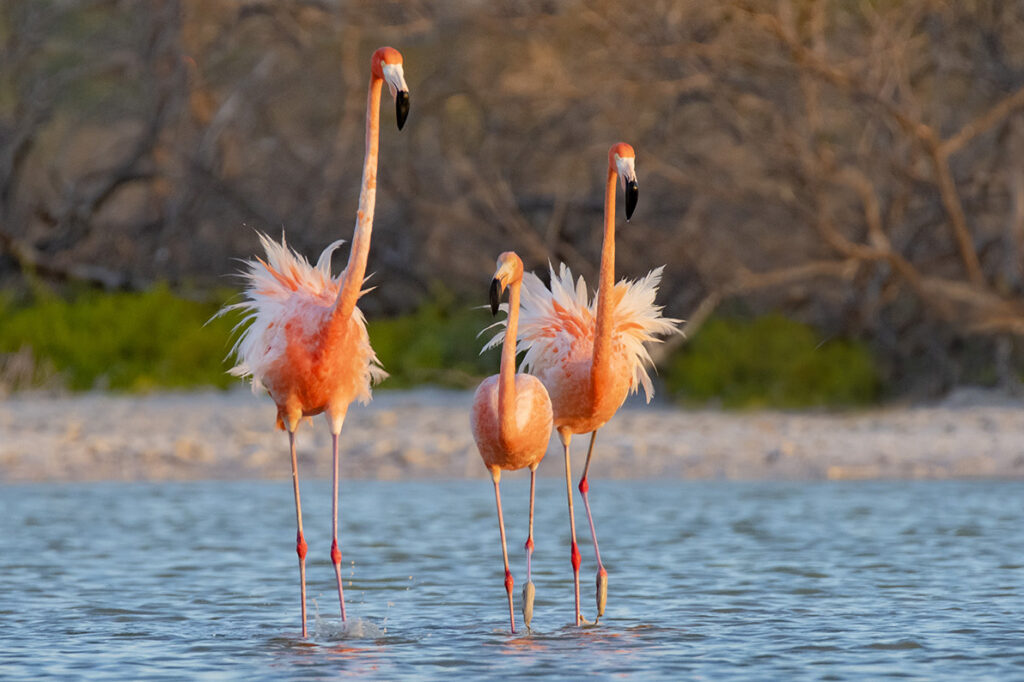
These two males are courting a female. The raised feathers on their backs are referred to as the “chrysanthemum display” because of its resemblance to the flower of the same name.
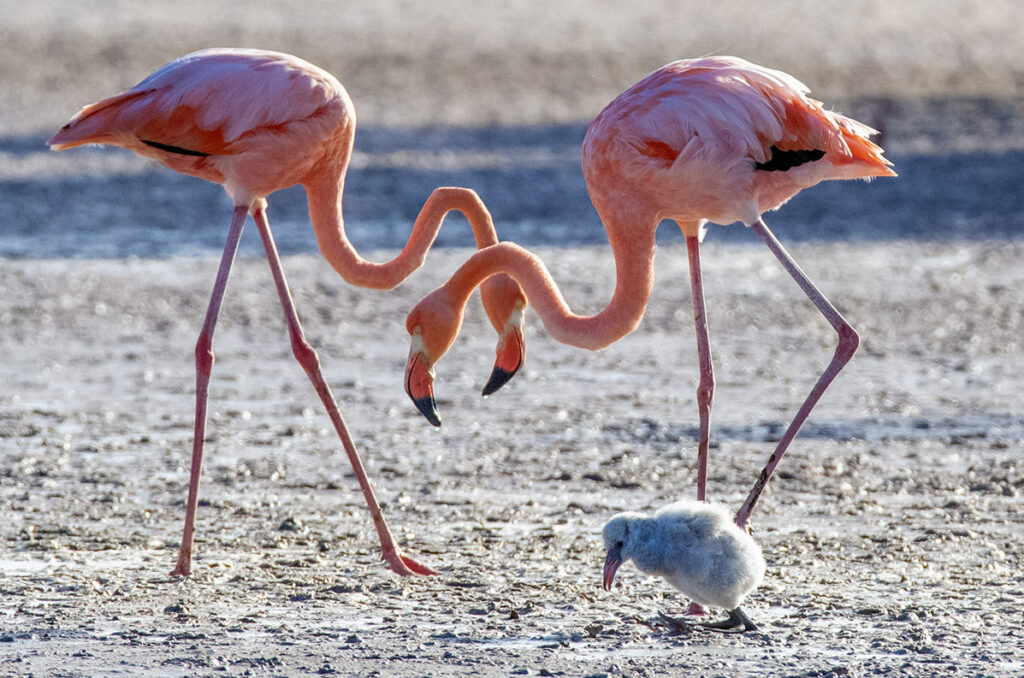
Both male and female adults feeds their young chicks a secretion from their upper digestive tract referred to as “crop milk” which is 8 to 9% protein and 15% fat. The secretion, which looks like blood, is bright red in colour because of the presence of carotenoid pigments which the chick temporarily stores in its liver and uses later to colour its adult feathers.
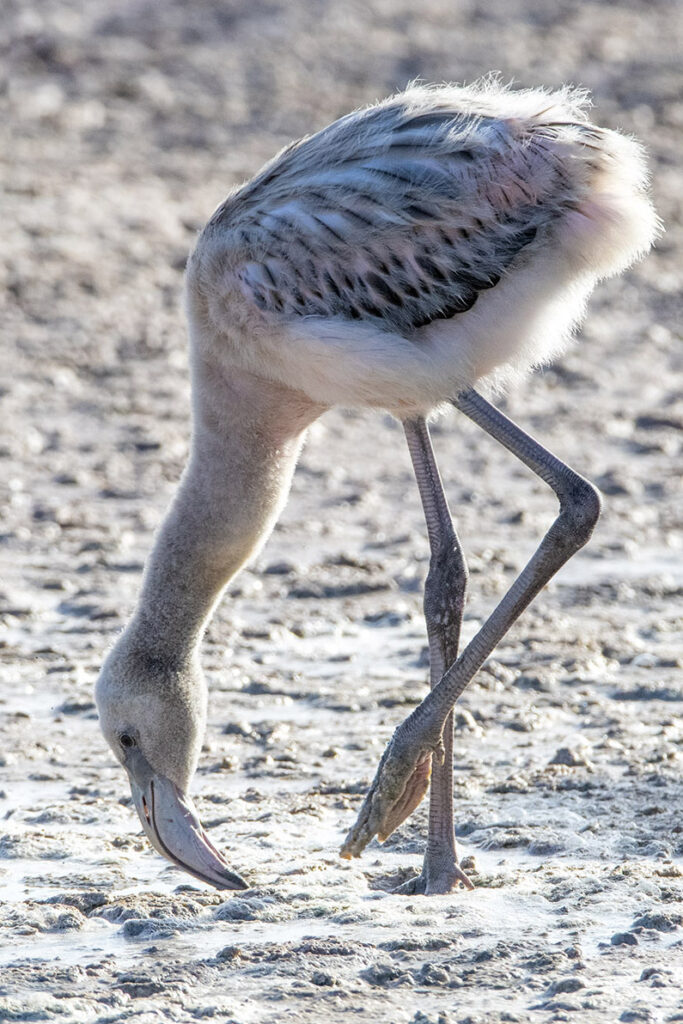
At two months of age the beak on a flamingo chick resembles that of an adult and the bird can largely feed itself.
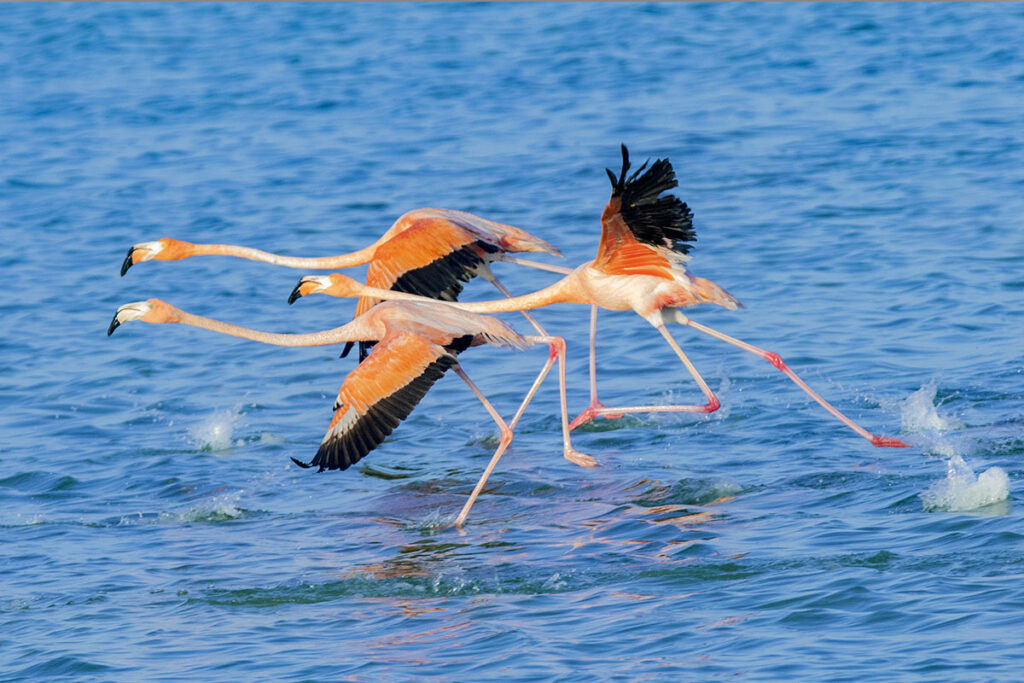
To take off, a flamingo runs several steps and then easily lifts into the air.
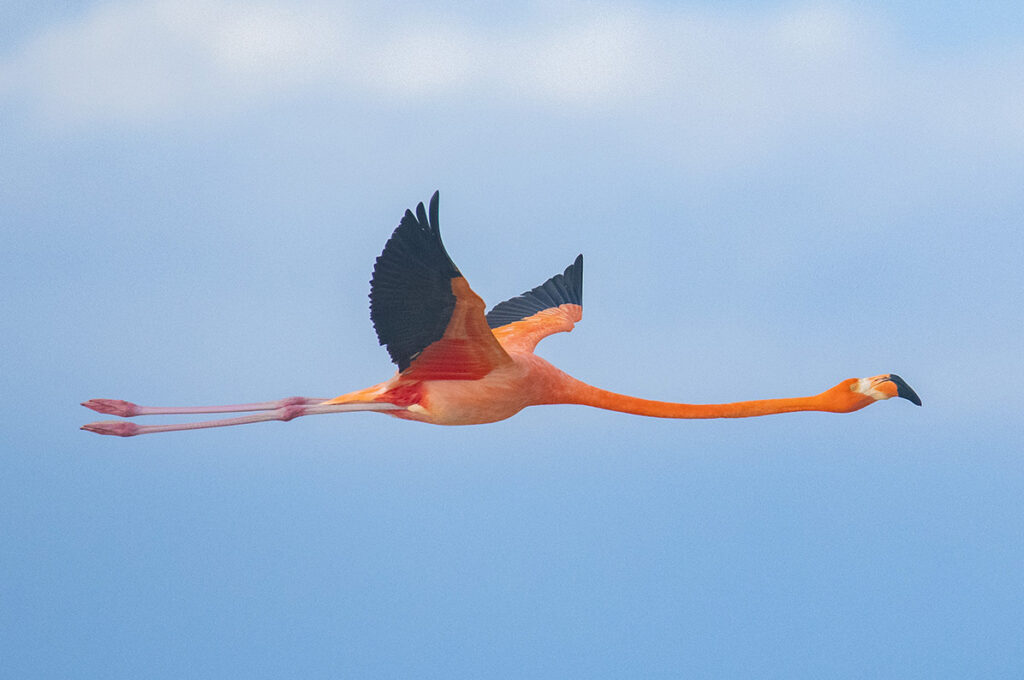
In flamingos, both its neck and legs are longer than its body.
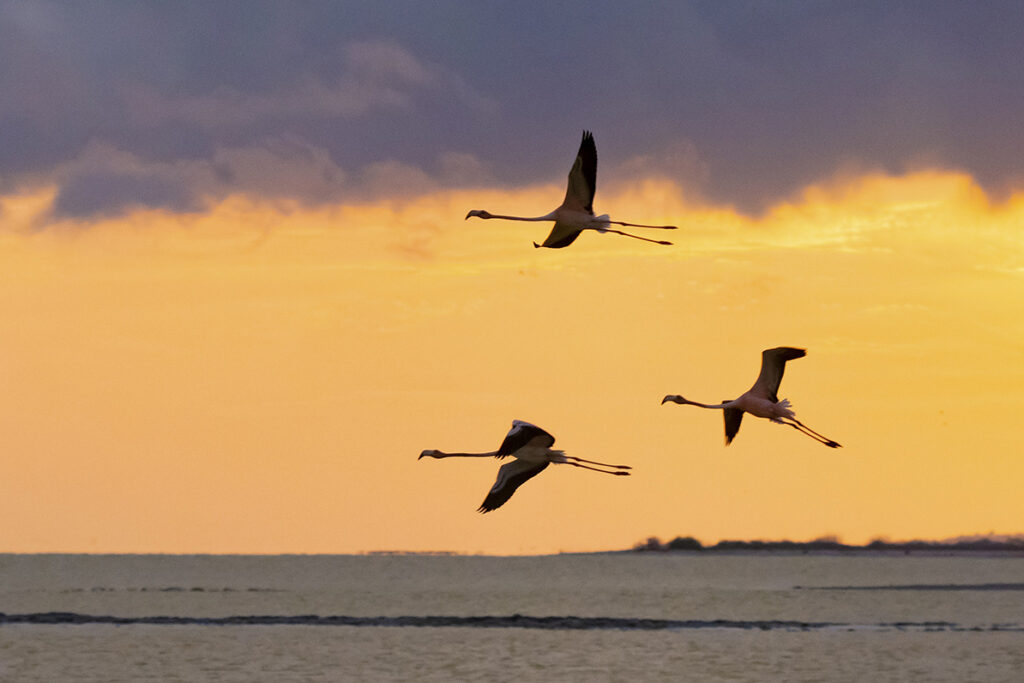
Since flamingos don’t rely on vision when they forage they can feed at nighttime as well as during the day.
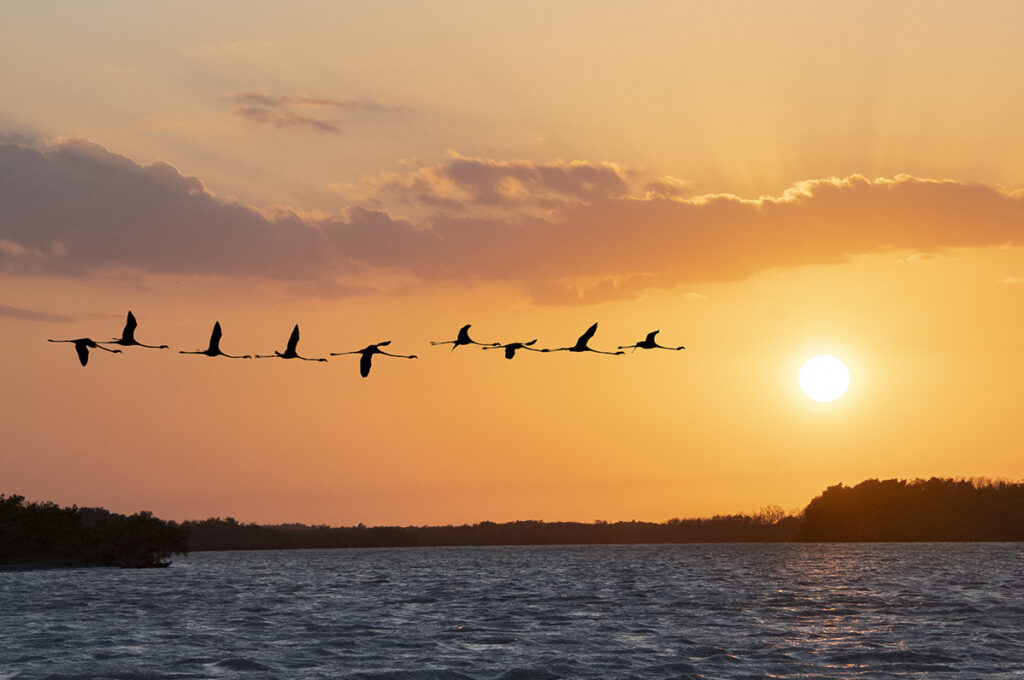
In flight, flamingos honk to each other continuously and their distinctive voices can be easily be heard as they fly overhead.
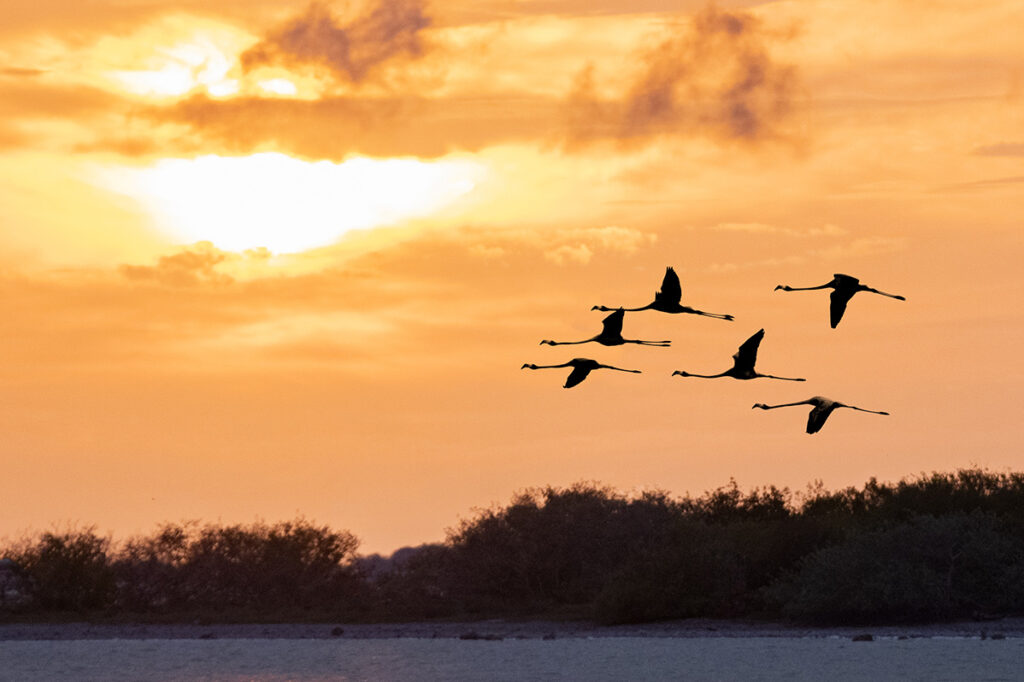
The total world population of American flamingos is around 300,000 birds, with the greatest number breeding in the Bahama Islands.
About the Author – Dr. Wayne Lynch
For more than 40 years, Dr. Wayne Lynch has been writing about and photographing the wildlands of the world from the stark beauty of the Arctic and Antarctic to the lush rainforests of the tropics. Today, he is one of Canada’s best-known and most widely published nature writers and wildlife photographers. His photo credits include hundreds of magazine covers, thousands of calendar shots, and tens of thousands of images published in over 80 countries. He is also the author/photographer of more than 45 books for children as well as over 20 highly acclaimed natural history books for adults including Windswept: A Passionate View of the Prairie Grasslands; Penguins of the World; Bears: Monarchs of the Northern Wilderness; A is for Arctic: Natural Wonders of a Polar World; Wild Birds Across the Prairies; Planet Arctic: Life at the Top of the World; The Great Northern Kingdom: Life in the Boreal Forest; Owls of the United States and Canada: A Complete Guide to their Biology and Behavior; Penguins: The World’s Coolest Birds; Galapagos: A Traveler’s Introduction; A Celebration of Prairie Birds; and Bears of the North: A Year Inside Their Worlds. In 2022, he released Wildlife of the Rockies for Kids, and Loons: Treasured Symbols of the North. His books have won multiple awards and have been described as “a magical combination of words and images.”
Dr. Lynch has observed and photographed wildlife in over 70 countries and is a Fellow of the internationally recognized Explorers Club, headquartered in New York City. A Fellow is someone who has actively participated in exploration or has substantially enlarged the scope of human knowledge through scientific achievements and published reports, books, and articles. In 1997, Dr. Lynch was elected as a Fellow to the Arctic Institute of North America in recognition of his contributions to the knowledge of polar and subpolar regions. And since 1996 his biography has been included in Canada’s Who’s Who.



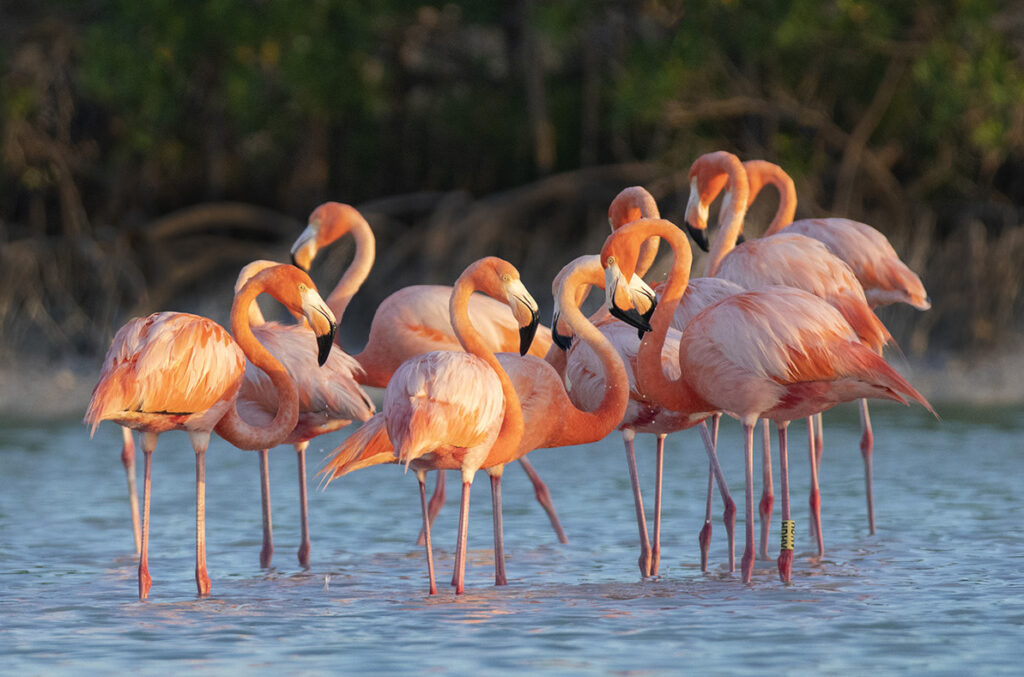
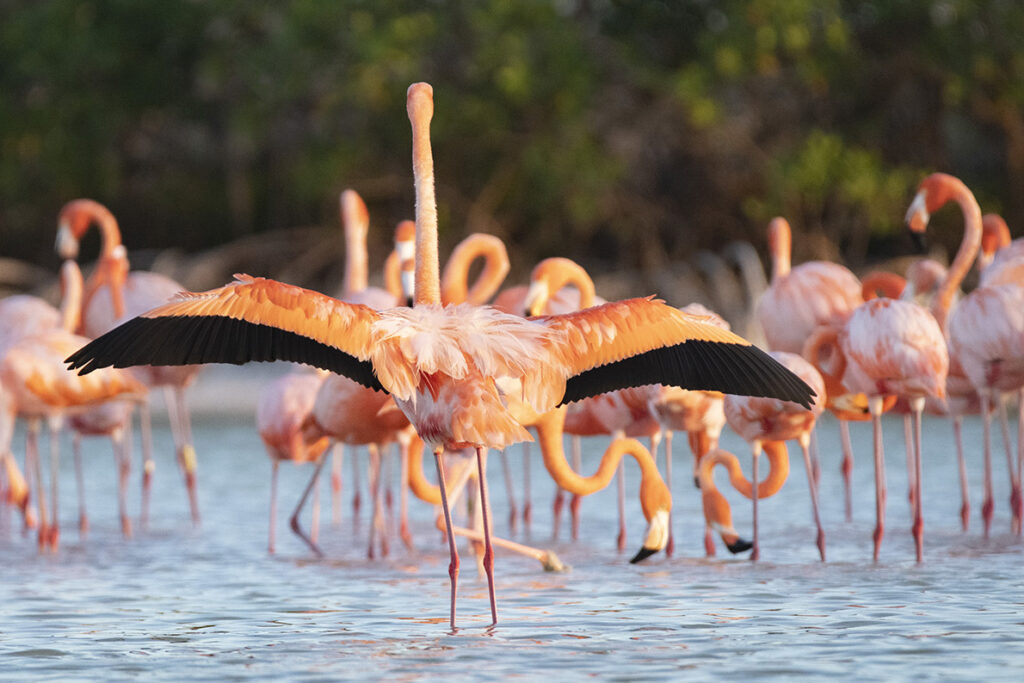
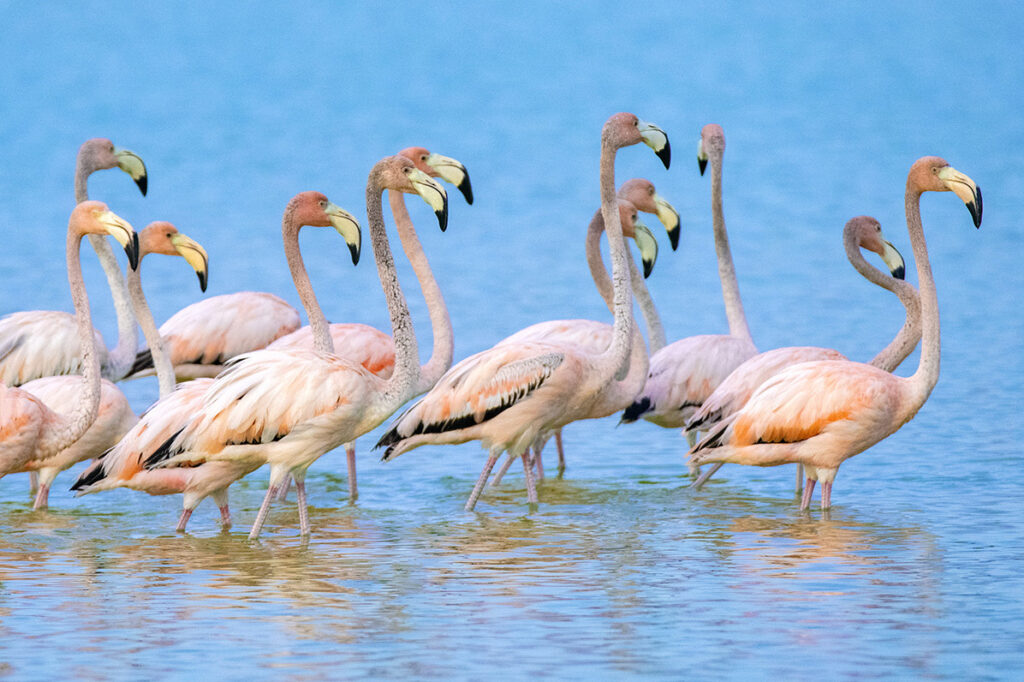
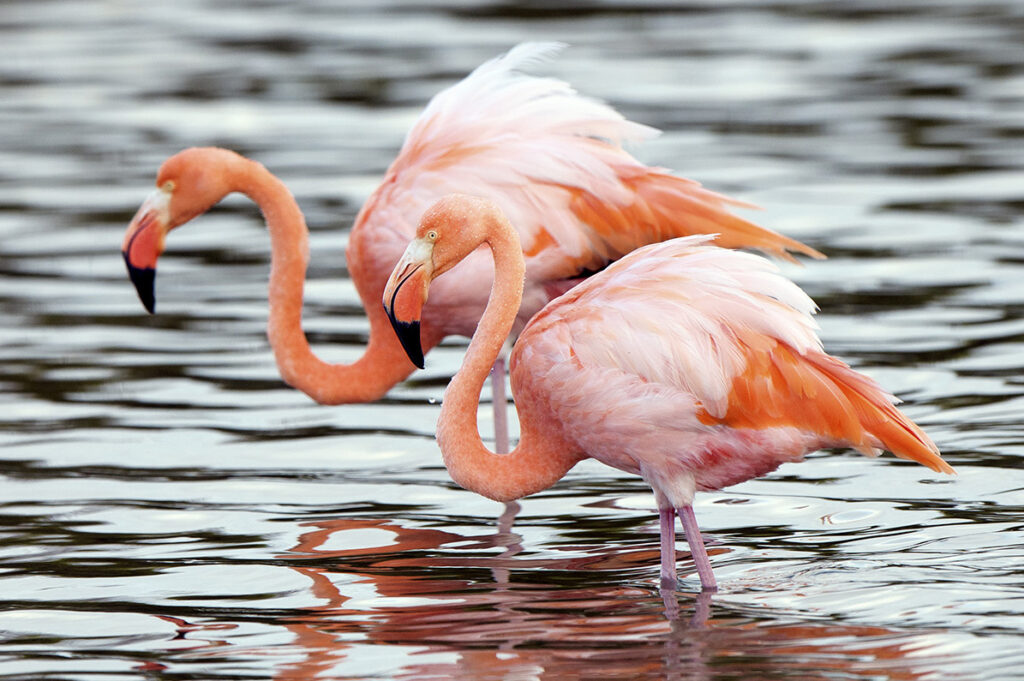
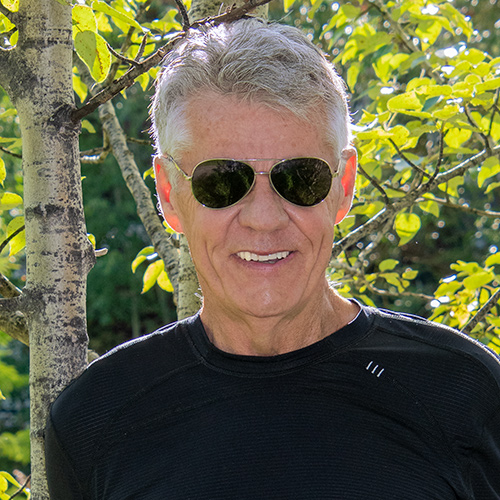




Great publication Wayne, many thanks for sharing.
Pascal
French hobby photographer